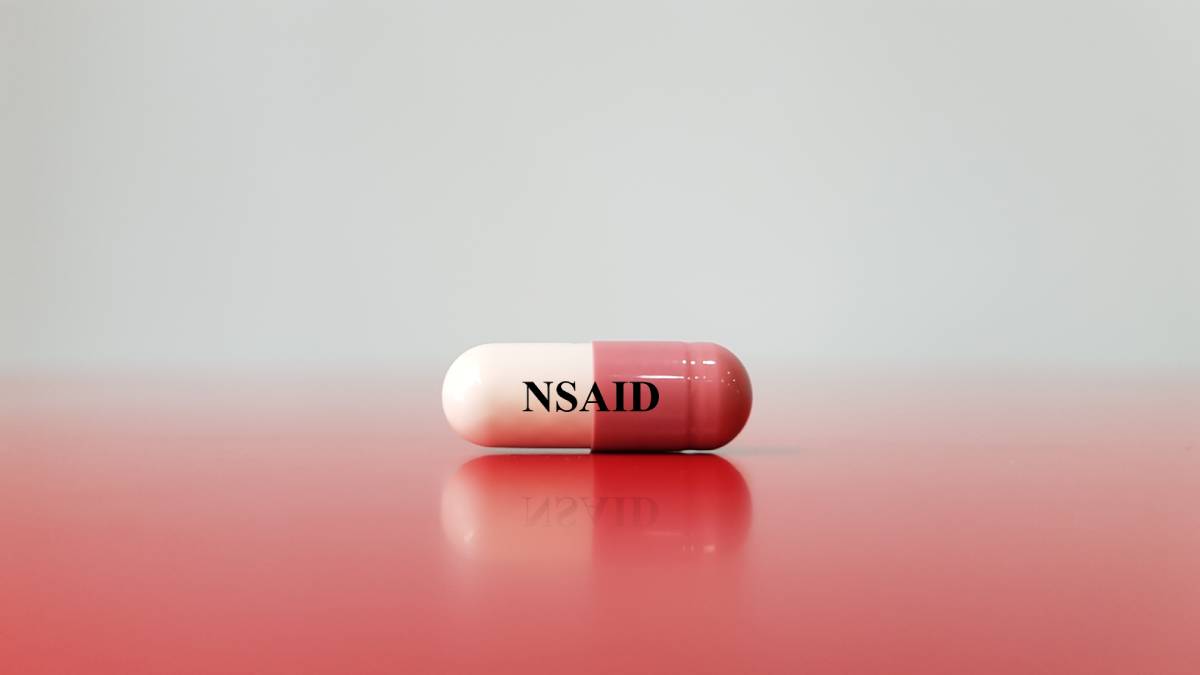Anti-Inflammatory Drugs That May Reduce Opioid Burden

According to the Centers for Disease Control and Prevention (CDC), overdoses from opioids, a potent yet highly addictive class of pain medications, are a leading cause of injury-related death in the United States.1 Alternative types of pain medications that don’t carry as high a risk of addiction and overdose as opioids may help alleviate this opioid crisis. One such class of medications is anti-inflammatory drugs, which range from over-the-counter medications such as aspirin and ibuprofen to prescription-strength drugs and corticosteroids.2 Because inflammation is a major factor in the development of acute and chronic pain,3 anti-inflammatory drugs are a promising area of investigation for treating a wide range of pain types while also reducing the opioid burden.
A study recently published in the journal Pain Management4 illustrates how anti-inflammatory drugs may catalyze a shift away from opioids. Adults undergoing posterior spine surgery were divided into two groups: one received N-acetylcysteine (NAC), a powerful anti-inflammatory drug used to treat certain types of poisoning, after undergoing surgery, while the other group received a placebo. Patients given NAC took 16–22% fewer opioids compared to individuals in the placebo group. They also took longer to request pain medications after surgery and reported lower pain scores in the first two days after surgery. Although the study involved a small number of participants, it suggests that anti-inflammatory drugs can directly reduce opioid burden in the postoperative setting.
Anti-inflammatory drugs, in certain combinations and dosages, may be just as effective in reducing pain as opioids. In a 2013 analysis of evidence-based reviews, researchers writing in the Journal of the American Dental Association found that a combination of the anti-inflammatory medications ibuprofen and N-acetyl-p-aminophenol is safer and can provide greater analgesia, or pain relief, than opioids for acute postoperative dental pain from dental procedures such as third molar extraction (also known as wisdom teeth).5 A combination of ibuprofen and acetaminophen was, surprisingly, a potentially more effective analgesic for dental pain than opioids such as oxycodone and Percocet (the latter of which is a combination of oxycodone and acetaminophen).
Non-steroidal anti-inflammatory drugs (NSAIDs) hold their own against opioids in other pain areas. In a randomized clinical trial of 240 patients with chronic back pain or hip or knee osteoarthritis pain, opioids did not result in significantly better outcomes regarding the impact of pain on functioning, pain intensity, and adverse effects.6
Though NSAIDs are non-addictive, mostly owing to their lack of psychoactive effects, they carry other risks. High doses of NSAIDs can cause bleeding, liver poisoning, renal damage, and stroke.7 NSAIDs have been associated with an increased risk of thrombotic (coagulation or clotting) cardiovascular events, even with use of less than one week.8 In a 2017 study, all NSAIDs were found to be associated with an increased risk of acute myocardial infarction.9 While anti-inflammatory drugs may be on the whole safer than opioids and can help reduce the burden of opioid use and addiction on the public health system, it is important for patients to understand the risks associated with these drugs and follow the instructions of medical professionals when taking them.
References
1. Understanding Drug Overdoses and Deaths | Drug Overdose | CDC Injury Center. https://www.cdc.gov/drugoverdose/epidemic/index.html (2023).
2. NSAIDs. nhs.uk https://www.nhs.uk/conditions/nsaids/ (2017).
3. Fang, X.-X. et al. Inflammation in pathogenesis of chronic pain: Foe and friend. Mol. Pain 19, 17448069231178176 (2023), DOI: 10.1177/17448069231178176
4. Wilson, S. H. et al. The impact of intraoperative N-acetylcysteine on opioid consumption following spine surgery: a randomized pilot trial. Pain Manag. 13, 593–602 (2023), DOI: 10.2217/pmt-2023-0061
5. Moore, P. A. & Hersh, E. V. Combining ibuprofen and acetaminophen for acute pain management after third-molar extractions: Translating clinical research to dental practice. J. Am. Dent. Assoc. 144, 898–908 (2013), DOI: 10.14219/jada.archive.2013.0207
6. Krebs, E. E. et al. Effect of Opioid vs Nonopioid Medications on Pain-Related Function in Patients With Chronic Back Pain or Hip or Knee Osteoarthritis Pain: The SPACE Randomized Clinical Trial. JAMA 319, 872–882 (2018), DOI: 10.1001/jama.2018.0899
7. Davis, A. & Robson, J. The dangers of NSAIDs: look both ways. Br. J. Gen. Pract. 66, 172–173 (2016), DOI: 10.3399/bjgp16X684433
8. Schjerning, A.-M., McGettigan, P. & Gislason, G. Cardiovascular effects and safety of (non-aspirin) NSAIDs. Nat. Rev. Cardiol. 17, 574–584 (2020), DOI: 10.1038/s41569-020-0366-z
9. Bally, M. et al. Risk of acute myocardial infarction with NSAIDs in real world use: bayesian meta-analysis of individual patient data. BMJ 357, j1909 (2017), DOI: 10.1136/bmj.j1909
